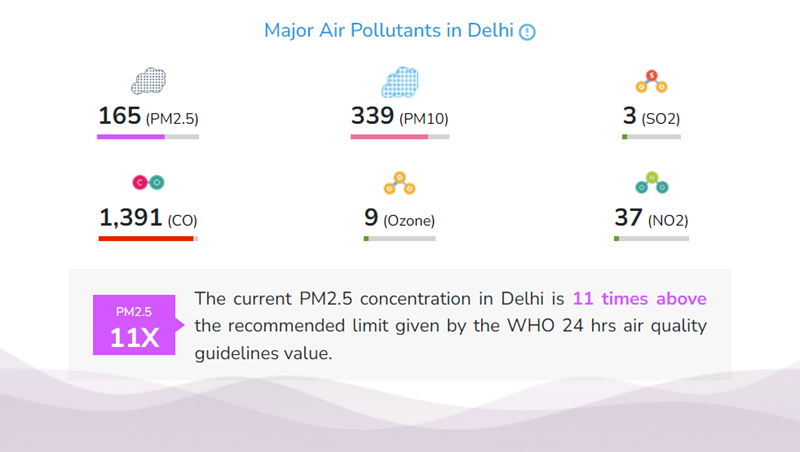Image source : TheIndianExpress
Delhi’s never-ending battle with air pollution has reached a new low point. The air quality index (AQI) has risen above the ominous 450 threshold, putting it in the severe plus category, indicating an imminent public health emergency. The situation has deteriorated to the point where Lieutenant-Governor V.K. Saxena has called an emergency conference, highlighting the gravity of the issue. Elementary schools in India’s capital city have been closed due to a sequence of interconnected events, and the responsibility is not restricted to local contaminants.
The AQI, which ranges from 0 to 500, is an important measure. An AQI of 0-50 is considered “good,” 51-100 is satisfactory, 101-200 is moderate, 201-300 is poor, 301-400 is very poor, and 401-500 is severe. However, the AQI in Delhi has risen above 500, firmly placing it in the severe plus or emergency category. Public health specialists equate the health risks of breathing Delhi’s poor air for a day to smoking 50 cigarettes.

The combination of stubble burning in neighbouring states, local pollutants, and unfavourable climatic circumstances has resulted in Delhi’s air quality deteriorating to the worst level.
The AQI, which has risen from 351 to 471 in mere hours, has resulted in the activation of the Graded Response Action Plan (GRAP) The Graded Response Action Plan (GRAP) at stage 3. The strategy is divided into four stages, with the AQI crossing 450 triggering the severe plus category. The Commission for Air Quality Management (CAQM) of the Central Government implemented Stage 3, which included the closure of schools and restrictions on vehicular movement. However, the final stage, Stage 4, remains unenforced.
The delay in adopting Stage 4 is due to observations that Delhi’s AQI is dropping due to recent Stage 3 efforts. The CAQM stated that it is fair to wait for the current measures to impact the average AQI before implementing strict restrictions. Unfavourable weather conditions such as low wind speed and reduced rainfall, are predicted to continue, making the situation more difficult.

While these steps aim to address the current crisis, the broader picture links Delhi’s air quality problem to a global public health risk. The Environment Pollution (Prevention and Control) Authority of Delhi declared air pollution a public health emergency in 2019, recognising the serious impact of pollution on health. This declaration stressed the importance of long-term, systemic adjustments to mitigate the interrelated health implications.
The ongoing air quality issue in Delhi emphasises the importance of a collaborative effort to decrease pollution, protect public health, and enable individuals to live healthier lives. The profound impacts of pollution on health, including respiratory ailments and affecting broader aspects like outdoor activities and employment, necessitate long term solutions. Addressing pollution is not merely an environmental concern in a society where health and air quality are inextricably linked; it is an overarching priority for the health and well-being of millions.
Sources
Delhi blanketed by toxic haze, world’s most polluted city again
The great smog of Delhi
Ambient (outdoor) air pollution
Air Pollution in Delhi and the Health Emergency
Delhi air reaches alarming level of pollution; TERI advises curtailing travel and exposure to air



